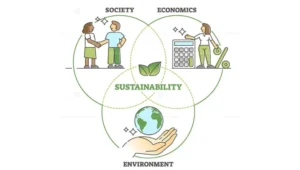Understanding how do International Environmental Laws Impact Businesses is critical in today’s global economy. From trade regulations and carbon taxes to waste directives and deforestation prevention, these laws significantly shape business operations, competitiveness, and profitability. This article explores how international environmental laws affect companies, the challenges firms face, and key strategies for effective compliance and sustainable growth.
1. Regulatory Diversity: A Primary Challenge
A core issue of how International Environmental Laws Impact Businesses is navigating disparate regulations across jurisdictions. Companies operating in multiple markets face a patchwork of environmental standards and certifications—ISO 14001, REACH (EU chemicals regulation), MARPOL (marine pollution), and carbon border adjustment mechanisms—each with unique compliance demands.
-
Compliance Costs: Varying thresholds and standards increase adaptation costs and risk of non-compliance fines.
-
Certification Overload: Firms must secure region-specific certifications (e.g., REACH vs. U.S. EPA).
Result: Higher administrative burden and siloed operations, especially problematic for SMEs.
2. Economic Constraints & Competitive Pressures
Exploring how do International Environmental Laws Impact Businesses reveals the “pollution haven hypothesis”: firms may relocate to countries with lax rules, creating environmental and ethical dilemmas. Meanwhile, compliance requires significant financial investments—upgrading technologies, hiring specialists, and implementing reporting systems. SMEs often struggle, facing higher relative costs and weaker market power.
3. Operational Disruption & Supply Chain Complexity
Understanding how do International Environmental Laws Impact Businesses underscores operational shifts: waste treatment (e.g., RCRA/REACH), sustainable land use, and adherence throughout global supply chains.
-
Extended Reporting: Businesses must track and disclose carbon, water, and waste across operations and suppliers.
-
Due Diligence: Laws like the EU Deforestation Regulation (EUDR) require traceability deep into supply chains, increasing audit complexity and documentation burdens.
4. Innovation & Long-Term Competitive Advantage
A key question in how do International Environmental Laws Impact Businesses is whether they hamper or stimulate innovation. According to the Porter Hypothesis, stringent environmental regulations can catalyze technological innovation, operational efficiency, and long-term competitiveness.
-
Efficiency gains: lower energy and waste costs, tax credits
-
New markets: green products and services, ESG investors
-
Brand differentiation: Sustainability becomes a competitive advantage
5. Enforcement Variability & Political Risk

An essential aspect of how do International Environmental Laws Impact Businesses is the duality of enforcement:
-
Strong enforcement: EU regulations like carbon taxes, pollution laws, impose heavy penalties and reputational damage.
-
Weak enforcement: Many developing countries have regulatory gaps, corruption, and underfunded agencies, leading to inconsistent compliance landscapes.
This leaves firms navigating volatile regulatory risk depending on the region.
6. Compliance Strategies & Best Practices
A. Comprehensive Risk Assessment & Audits
Identifying regulatory exposure, supply-chain vulnerabilities, and auditing environmental performance helps answer how do International Environmental Laws Impact Businesses by proactively reducing risk.
B. Adoption of International Standards
Implementing ISO 14001 or sector-specific frameworks allows multinational consistency and demonstrates proactive compliance.
C. Strategic Certifications
Earning recognized credentials (ISO, LEED, REACH, MARPOL compliance) ensures global credibility and simpler cross-border operations.
D. Digital Tools & Training
IoT, sensors, ERP systems, and AI help monitor environmental metrics. Employee and supplier training ensures operational consistency.
E. Cross‑Sector Collaboration
Partnering with NGOs, regulators, and consultants enhances compliance knowledge, shared infrastructure, and policy engagement.
F. Innovative Tech Adoption
Blockchain tracking (e.g., maritime MARPOL compliance), carbon capture, and circular economy initiatives can turn compliance into market strengths.
7. Future Trends & Preparation
Looking ahead at how do International Environmental Laws Impact Businesses, these current trends are emerging:
-
Carbon border adjustments: global impact on import-export pricing
-
Mandatory ESG reporting: consumer and investor pressure increases in EU, UK, and elsewhere
-
Legal liabilities: Corporate directors are increasingly accountable under EU and US climate laws
-
Dynamic regulation: Ongoing decarbonization and biodiversity laws force real-time compliance upgrades
Conclusion
Answering how do International Environmental Laws Impact Businesses reveals both challenges and competitive opportunities. While firms must contend with regulatory complexity, rising costs, operational adaptations, and enforcement variability, those that proactively embrace compliance can spur innovation, reduce risk, and gain strategic advantage.
Key steps businesses can take now:
-
Map international environmental obligations
-
Invest in ISO 14001, ESG reporting, and supply‑chain traceability
-
Deploy tech for real‑time monitoring and auditing
-
Engage stakeholders for collaborative solutions
-
Align regulation surrender with sustainable innovation
By weaving compliance into their core strategy, firms won’t just survive — they can thrive in the evolving world shaped by international environmental laws.








